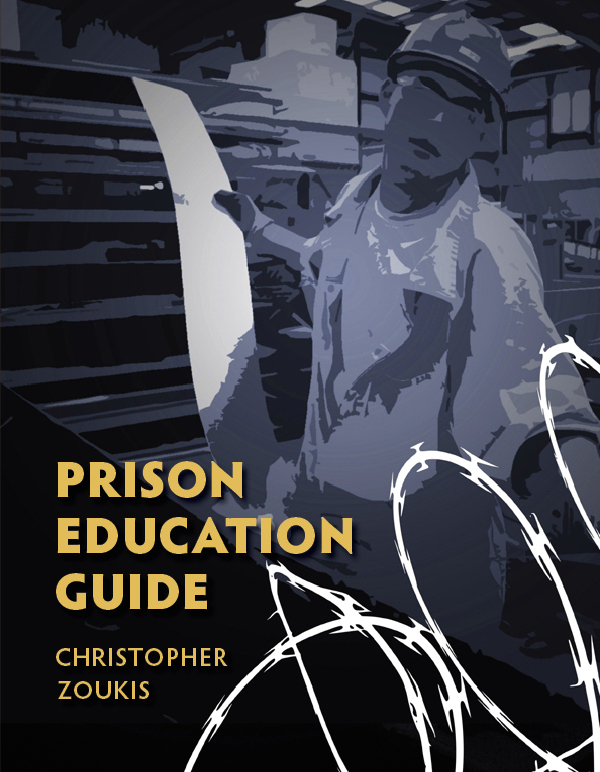Ninth Circuit: ‘Dominion and Control’ Provision of Search Warrant for Suspect’s Computer That Lacked Temporal or Other Limitation Constitutes General Warrant
The United States Court of Appeals for the Ninth Circuit overturned the U.S. District Court for the Western District of Washington’s denial of a defendant’s motion to suppress evidence of child exploitation, holding that investigators relied on an overbroad and unspecific warrant provision when they discovered the evidence.
Background
On January 28, 2020, Burlington Police Department officers responded to a 911 call at the residence of John Holcomb, where he lived with his then-girlfriend, Jill Liddle. Holcomb reported issues with his ex-girlfriend, “J.J.,” who had recently moved into Holcomb’s home. J.J. alleged that Holcomb sexually assaulted her the previous day, claiming he took non-consensual photographs during a sexual encounter and uploaded them to his computer and he later forcibly restrained her during oral sex, causing her pain.
That same day, officers obtained a search warrant authorizing the seizure—but not the search—of Holcomb’s cellphone and computer. During the execution of the warrant, they discovered the computer was connected to a surveillance system with a bedroom camera. Holcomb was arrested for rape that evening. He insisted the encounter was consensual, pointing to a surveillance video on his computer as proof and initially consented to its search. He provided his password and instructions on how to find and play the video. Liddle supported his claim, stating she had viewed the video and believed it showed a consensual sexual encounter. Six days later, before investigators reviewed the video, Holcomb withdrew his consent.
On February 4, 2020, a second warrant was issued to search the computer, authorizing the seizure of five categories of evidence: (1) communications from June 1, 2019, to current; (2) surveillance footage from January 26, 2020, to current; (3) location data from January 26, 2020, to current; (4) search history from January 26, 2020, to current; and (5) “dominion and control” evidence (e.g., documents, photos, videos, etc. showing dominion and control for the devices) with no temporal limit.
The computer had two hard drives: an upper drive with newer files (including January 2020 surveillance) and a lower drive with older files (pre-September 2018). Instead of filtering by date, the forensic examiner manually reviewed all videos. He found a January 27, 2020, video on the upper drive showing a seemingly consensual encounter between Holcomb and J.J., with no apparent restraint, though Holcomb touched J.J.’s buttocks and she said, “I’m done.” After consulting with the prosecutor and a detective—who both agreed the encounter appeared consensual—the detective ordered a halt to further testing, expecting dismissal of the assault charges.
Nevertheless, the examiner continued searching the lower hard drive, viewing older videos, including consensual ones of Holcomb and Liddle. He then discovered three videos from November 2016: one depicting Holcomb raping a pre-pubescent girl (later identified as his daughter) and two with thumbnails suggesting similar content, which he did not open. Based on these findings, a third warrant was obtained to search for child pornography, authorizing review of all three videos.
After reviewing the three videos, the sexual assault charges against Holcomb were dropped, but he was subsequently charged with rape of a child and related crimes by the Island County Police Department and then the Skagit County Police Department. However, both departments dropped their charges after Holcomb moved to suppress the videos. The case was then referred to the FBI.
On April 28, 2021, a federal grand jury indicted Holcomb for producing child pornography under 18 U.S.C. § 2251(a). He moved to suppress the three videos, challenging the “dominion and control” provision of the second warrant as overbroad and insufficiently particular due to its lack of a temporal limit. The District Court initially granted the motion to suppress, concluding the provision was invalid and the good-faith exception inapplicable because no reasonable officer could reasonably presume it to be valid.
Citing Messerschmidt v. Millender, 565 U.S. 535 (2012), the Government moved for reconsideration, arguing that the search was valid based on the good-faith doctrine because there was no clear precedent requiring temporal limits on such dominion and control provisions. The District Court granted reconsideration and ultimately denied Holcomb’s motion to suppress, concluding the good-faith exception applied. However, the court reaffirmed its ruling that the dominion and control provision was overbroad and insufficiently particular, pointedly noting the “state of the law [was] admittedly opaque.”
Holcomb subsequently pleaded guilty to producing child pornography, reserving his right to appeal the denial of his motion to suppress. He was sentenced to 240 months of imprisonment followed by lifetime supervised release. Holcomb timely appealed.
Analysis
The Court began its analysis by noting that the Fourth Amendment prohibits general warrants by requiring that warrants particularly describe the place to be searched and things to be seized, supported by probable cause. U.S. Const. amend. IV. This specificity requirement encompasses two dimensions: (1) breadth, which limits the warrant to the probable cause basis and (2) particularity, which clearly states what is sought to prevent unfettered discretion in execution. United States v. SDI Future Health, Inc., 568 F.3d 684 (9th Cir. 2009). In the computer context, heightened specificity applies due to the vast amount of data stored. United States v. Adjani, 452 F.3d 1140, 1149 (9th Cir. 2006). A warrant is overbroad if it lacks meaningful limits tied to the investigation’s scope, such as temporal restrictions where the government knows the relevant timeframe. United States v. Kow, 58 F.3d 423 (9th Cir. 1995); SDI. It lacks particularity if it fails to cabin discretion, especially absent limits making a more precise description impossible. United States v. Hurt, 795 F.2d 765 (9th Cir. 1986); United States v. Banks, 556 F.3d 967 (9th Cir. 2009). Evidence seized under invalid general warrants must be suppressed. United States v. Espinosa, 827 F.2d 604 (9th Cir. 1987).
The Court first determined that dominion and control evidence was not relevant to the sexual assault investigation, as the surveillance video’s content would resolve consent regardless of ownership, and Holcomb never disputed control (providing his password initially). Even assuming relevance for the sake of argument, e.g., to detect tampering, the provision violated specificity. It was overbroad because it authorized seizure of any files—documents, photos, videos, etc.—showing dominion without limits on type or time, unlike other provisions that were restricted to post-2019/2020 periods surrounding the January 27, 2020, assault. The affidavit lacked probable cause for such a limitless search, mentioning dominion only in reciting Holcomb’s consent and revocation. It was insufficiently particular because, amid thousands of files, it left the examiner unfettered discretion to open any file, including pre-2018 ones on the lower hard drive. The State knew the assault’s timeframe, making temporal limits feasible (as in other provisions), yet failed to impose them. The Court explained that this transformed the warrant into a general one, enabling exploratory rummaging, United States v. Wright, 667 F.2d 793 (9th Cir. 1982), as evidenced by the examiner viewing unrelated intimate videos.
The Court rejected severability, noting that the Government never argued it, thereby waiving or forfeiting the issue. Alternatively, and independently, the Court found that severability would not save the search because the videos from November 2016 were found solely under the dominion provision during the lower hard drive search, not the temporally limited surveillance provision, i.e., post-January 26, 2020. The Court clarified that no per se temporal limit rule for dominion provisions exists, United States v. Spilotro, 800 F.2d 959 (9th Cir. 1986), but here, given the known timeframe, lack of probable cause for older files and other provisions’ limits, the provision was invalid.
Under United States v. Leon, 468 U.S. 897 (1984), evidence from an invalid warrant is not suppressed if officers relied on it in objectively reasonable good faith. United States v. Barnes, 895 F.3d 1194 (9th Cir. 2018). Good faith fails in four per se situations, including where the warrant is so facially deficient in particularity that officers cannot reasonably presume validity. United States v. Underwood, 725 F.3d 1076 (9th Cir. 2013). The Court noted tension on the standard—whether it mirrors qualified immunity’s “clearly established” threshold, Messerschmidt v. Millender, 565 U.S. 535 (2012); United States v. Needham, 718 F.3d 1190 (9th Cir. 2013), or requires only reasonable officer awareness of illegality, Manriquez v. Ensley, 46 F.4th 1124 (9th Cir. 2022)—but declined resolution, as the exception failed under either.
The Court explained that precedents like Kow (invalidating a temporally unlimited business records warrant for a known fraud period) and SDI (invalidating unlimited categories unrelated to a fraud scheme) clearly establish that unlimited provisions like this—where probable cause was confined to a 2020 incident—are overbroad and facially deficient. The examiner’s reliance was unreasonable because a well-trained officer would recognize the deficiency, especially given the warrant’s other temporal limits.
Seizure without a warrant is lawful if officers are lawfully in the area and the evidence’s incriminatory nature is immediately apparent. United States v. Stafford, 416 F.3d 1068 (9th Cir. 2005). The Government bears the burden of proof. United States v. Chesher, 678 F.2d 1353 (9th Cir. 1982). Plain view fails if the search occurs under a general warrant. Spilotro.
The Court determined that the Government failed the first prong because as the examiner discovered the videos while executing the general warrant on the lower hard drive. The search was thus unlawful, precluding plain view justification.
Conclusion
The Court held that the “dominion and control” provision of the second warrant was unconstitutionally overbroad and insufficiently particular under the Fourth Amendment, rendering the warrant a general warrant; that the good-faith exception did not apply; and that the plain view doctrine did not independently justify the seizure.
Accordingly, the Court reversed the District Court’s ruling on Holcomb’s motion to suppress, vacated his conviction and sentence, and remanded for further proceedings consistent with its opinion. See: United States v. Holcomb, 132 F.4th 1118 (9th Cir. 2025).
As a digital subscriber to Criminal Legal News, you can access full text and downloads for this and other premium content.
Already a subscriber? Login
Related legal case
United States v. Holcomb
| Year | 2025 |
|---|---|
| Cite | 132 F.4th 1118 (9th Cir. 2025) |
| Level | Court of Appeals |
| Appeals Court Edition | F.4th |





